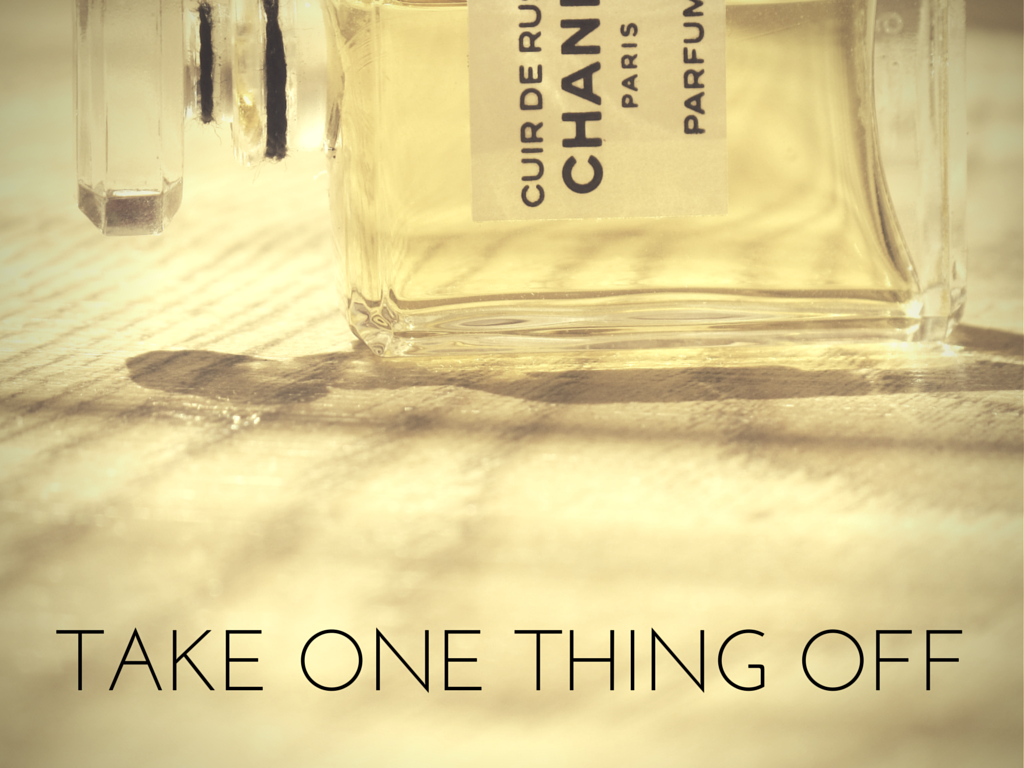Superstitious is like a woman that walks into a party wearing a gold lame dress that plunges to her navel. Like everyone else in the room, you think she’s gorgeous, but you’re not sure if she’s really your kind of people. I’m not sure I understand her yet, so I’m going to circle this interesting creature a little bit longer while I try to figure her out.
People are citing all manner of classic perfumes as reference: Arpege, Gold, even Portrait of a Lady. But none of those references help me place her in my mental pantheon of smells. Superstitious strikes me as more a modern cyborg than something classical or referential. And it certainly has nothing to do with Portrait of a Lady. Actually, I find it comes at me from slightly beyond my frame of reference, and thus my footing is unsure.
Something that takes me aback is the astringency of the opening: it’s as metallic and bitter as a mouthful of pennies, sluiced with the acid of unripe fruit. Sensation-wise, it reminds me of biting into a persimmon that’s two weeks away from becoming perfect, ripping all moisture from my mouth.
I’m starting to understand that not aldehydes smell or feel the same. Some feel loose and creamy, like those at the top of Chanel No. 22 – the fizz of a can of Fanta mixed into a pot of Pond’s Cold Cream. Some feel tight and lemony, like Tauer’s Noontide Petals. The aldehydes of Superstitious, on the other hand, are extremely fine-grained and waxy, like a bar of green soap put through a microplane grater and blown up your nose. It reminds me somewhat of the opening to Seyrig by Bruno Fazzolari. The onslaught is aggressive, and slightly mean.
What’s amazing about this fragrance – and I say this even before figuring out whether I like it or not – is how the clean, chemical bite of the aldehydes have been balanced out by the dirty, botanical impression of flowers. Even in the first onslaught of the perfume’s harsh, soapy green fuzz, you can smell the slightly unclean jasmine – wilting and browning, as if about to drop off a vine and into your lap. This produces an effect that is half synthetic, half naturalistic. You can almost imagine the perfumer muttering to himself as he works out the formula, “a little bit from the lab, and now a little bit from the garden”.
The quality of the florals is amazing – there is a Turkish rose, jasmine from Grasse, and a hint of dry peach skin a la Mitsouko in the later stages. But put aside expectations of sweetness, or even density. Even with the late addition of the peach, things stay dry, leathery, and slightly sour, like the inside of the strap of your watch after a long hot day, or the taste of a very dry, metallic white wine on the back of the tongue.
Which is a way of saying that although all signs point to lushness, this is not a particularly lush perfume. Being a longtime fan of Alber Elbaz and his work for Lanvin, I had expectations of something with as many dangerous curves as his midnight blue and flesh-colored dresses for this house in the 2008-2009 period. Alber himself is round; is it weird that I was expecting a perfume with his name on it to be round too? But Superstitious turns out to be as chicly angular as one of his models.
The drydown is a slightly smoky, raspy base of vetiver and woods that somehow reads to my nose as incense. It is slightly sweeter, or at least, less tart in the far reaches of the scent, and I find it comforting.
Superstitious is a very interesting, beautiful, and somewhat challenging perfume. It is perhaps easier to admire than to love, because a certain bitchiness inherent in its character suggests that this is a perfume that might not love you back. But despite a certain lack of easy access here, I really do like Superstitious, not least because it turns my expectations on their head. Expecting lush and sweet, I get angular and tart. Expecting classic, I get modern. Most of all, I admire the perfume’s sublime balance between its metallic, chemical shimmer and its unclean, slightly earthy flowers and fruit – and it’s this last aspect that might move me towards an eventual purchase. Some day.










